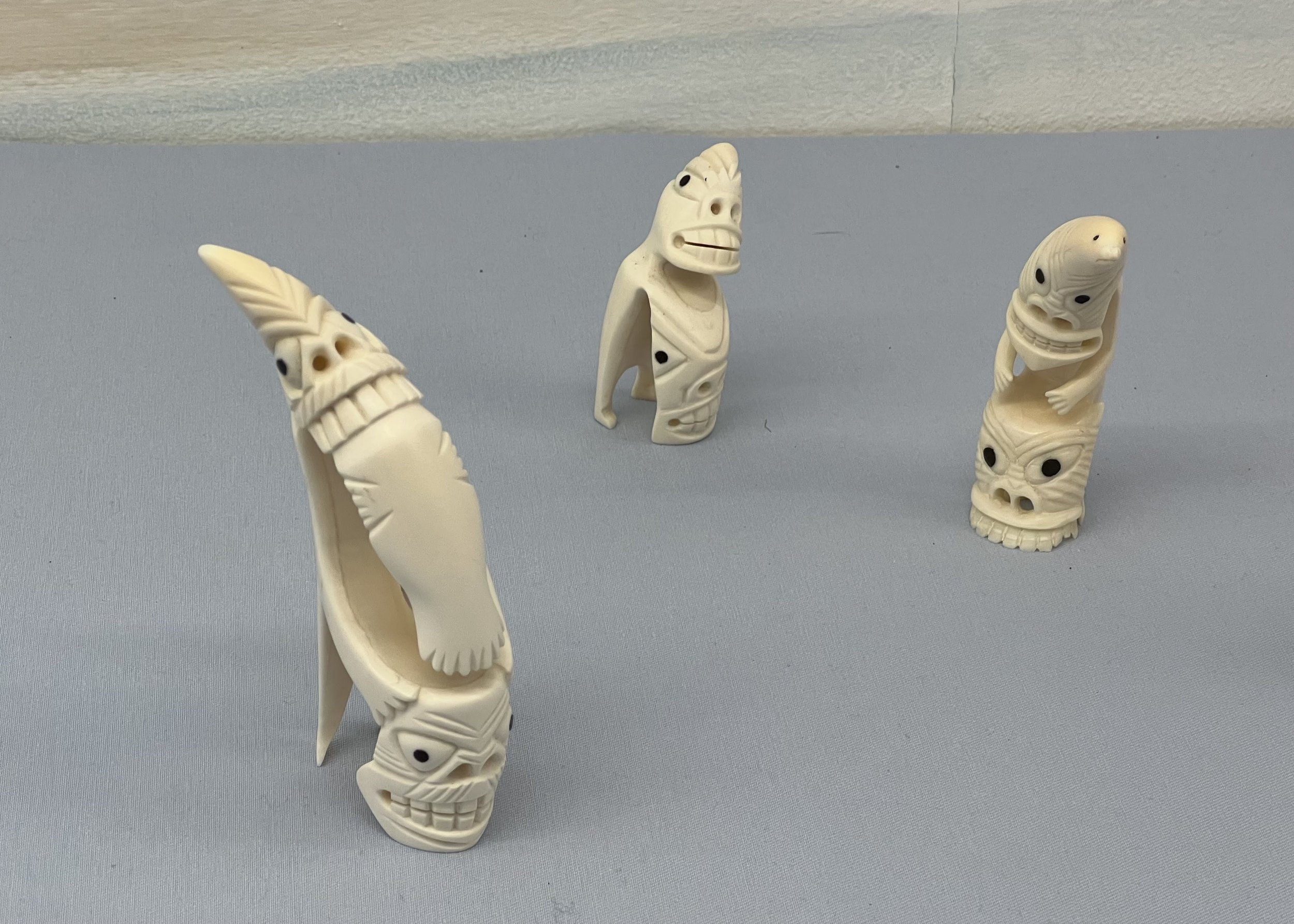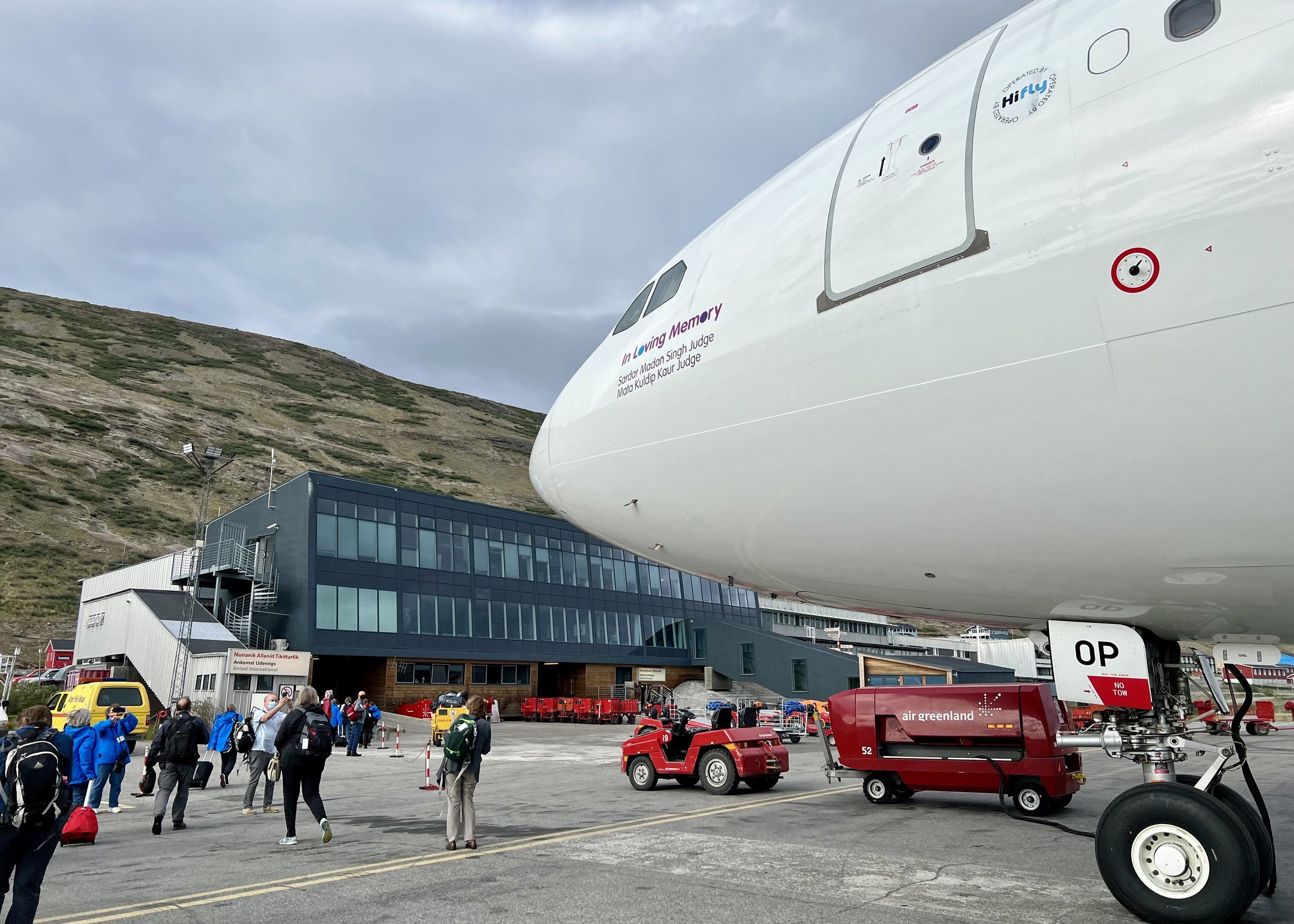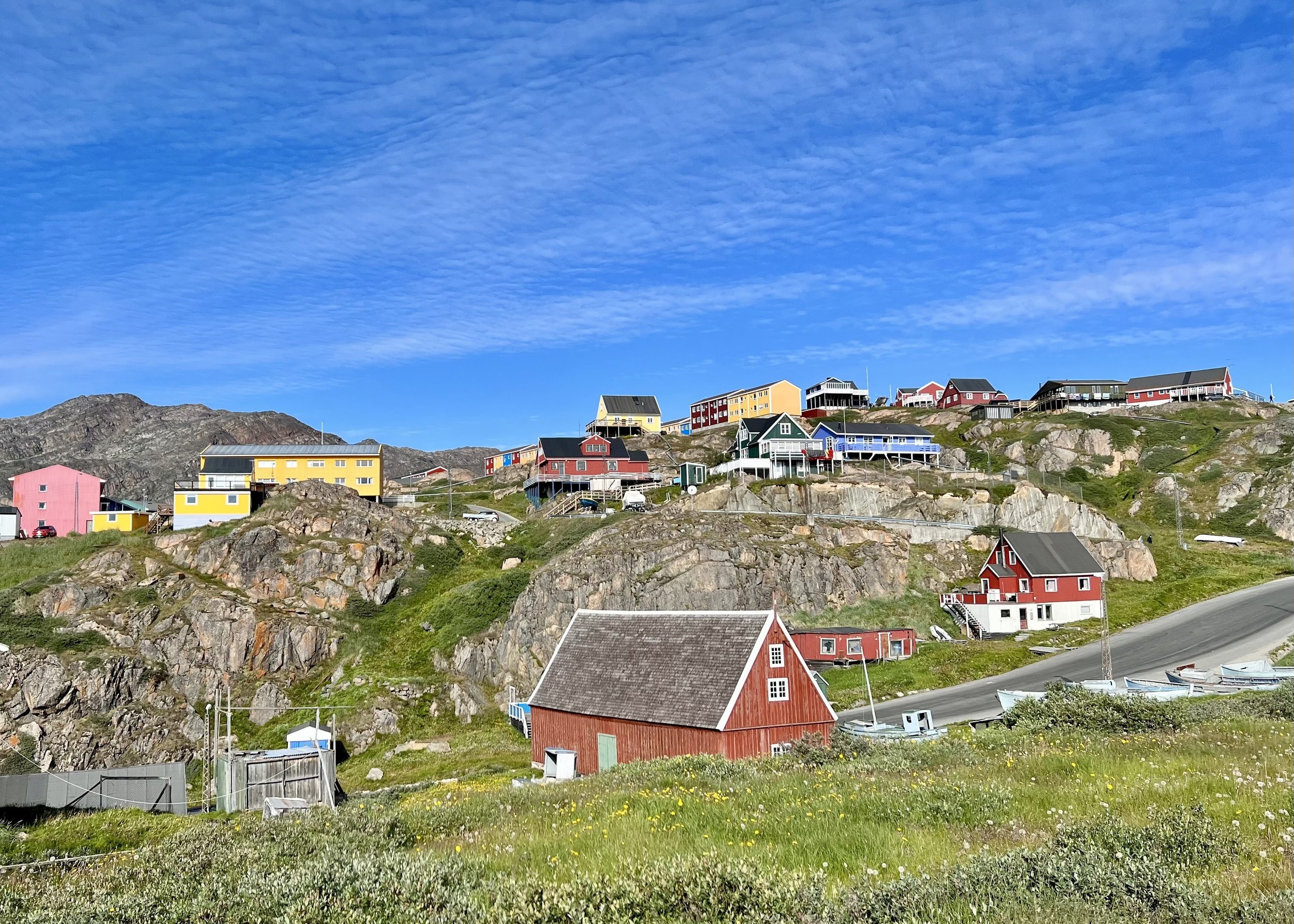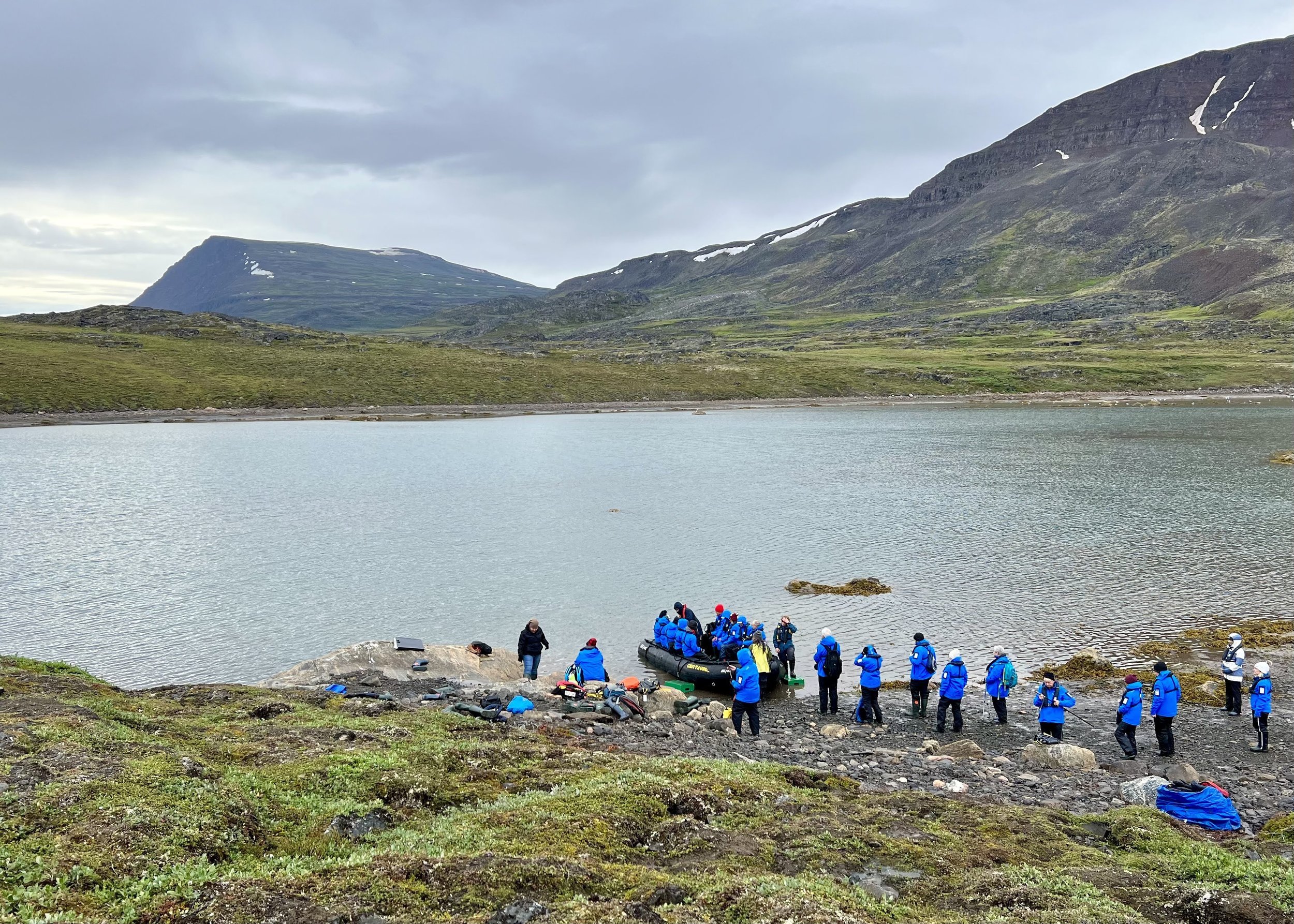Icebergs and Other Reasons To Love Greenland
Published October 18th, 2024
Photography by Jennifer Bain
On the world’s largest island that isn’t a continent, the roads end on the outskirts of each town and most of the land is covered by ice and snow. You’ll need a dogsled, snowmobile, helicopter or plane to travel between coastal communities in Greenland. Better yet, a boat like the Ocean Endeavour.
That trusty expedition ship, chartered by MIssissauga-based Adventure Canada, has taken me around the Arctic nation five times.
Now I know that 88 per cent of the population of nearly 57,000 is Inuit (predominantly Kalaallit) or mixed Danish and Inuit, and that Inuit Greenlanders strongly identify with Inuit Canadians. Now I understand that this autonomous country within the Kingdom of Denmark is geographically part of the North American continent and politically and culturally associated with Europe.
I’ve explored the three largest cities and several villages, spent precious quiet time wandering the tundra, cruised down astounding fjords, and hopped into Zodiacs to commune with icebergs and glaciers. Greenland may be a question mark in most people’s minds, but not mine.
Here are 10 things that make Greenland memorable.




Ilulissat
If you go to just one place in Greenland, make sure it’s Ilulissat, the iceberg capital of the world. Here you can watch icebergs as they float between calving glaciers and the sea. You can stroll down a boardwalk over fragile land that’s protected by UNESCO World Heritage Site status. And you can visit the stunning Ilulissat Icefjord Centre to learn about what you’re seeing.
Strange as it may sound in a country where 80 per cent of the land is covered in a melting ice cap, Greenland refuses to be victimized by climate change and officially sees it as a positive prospect. It stands ready to seize new opportunities.



Spandauer
Micro-obsessions are my thing, and as someone who helmed a newspaper food section and wrote two cookbooks, trust me when I say you must eat spandauer — the pastry commonly known as a danish — in Greenland. I like mine with custard centres. But what I really like is having an excuse to visit supermarkets like Pisiffik and Brugseni and find local bakeries.
Buy something from each spot for a DIY taste test and you’ll start to appreciate subtle differences. If you’re now craving a spandauer, the Mississauga-based Danish Pastry House chain has branches from Burlington to Newmarket.



Tupilaks
As Visit Greenland explains, a tupilak is a small figure that was traditionally carved from animal bones by shamans to protect someone from enemy attack. Inspired by figures from Inuit mythology, tupilaks were often put out to sea to find and kill the enemy, but that could backfire if the intended victim had greater powers of witchcraft than the creator.
Now tupilaks have become a popular art form and souvenir. You can take home those made of reindeer antler points, bone, soapstone, stone and wood, but not (as per CITES regulations) any made of whale teeth. I have three (so far) from Anori Art in Nuuk and the Greenlandic Art & Craft Workshop in Sisimiut.






Sculptures
In Nuuk, the capital city, I always pay my respects to the Mother of the Sea (Sassuma Arnaa), a sculpture that rises out of the old colonial harbour at both high and low tide. Legend has it she protects animals from misbehaving hunters by gathering them in her fiery hair, and Jens Christian Rosing’s sculpture works in seal, fish, walrus and bear. Nearby in front of the Nuuk Local Museum, a seaside memorial stone pays homage to a real-life female role model — polar explorer Arnarulunnguag, who joined Knud Rasmussen’s Fifth Thule Expedition from 1921 to 1924.




Kangerlussuaq Airport
My five Adventure Canada trips — between Greenland and either Nunavut or Newfoundland and Labrador — have involved charter flights from Toronto to Kangerlussuaq Airport and then a hodge-podge of buses to get us to the ship. I have a real soft spot for the aging former U.S. military base (circa 1940s) that boasts a taxidermied muskox and a much-photographed signpost facing the runway.
Scandinavian Airlines (SAS) placed the post in front of a hotel here in 1954 to celebrate a Copenhagen-Los Angeles route becoming the world’s first scheduled air service over the Arctic. It was later moved here. The goal is “to place Kangerlussuaq at the center of the world and display direction of travel and flight times to well-known destinations around the world.” Who knows how this lovable airport will fare now that new international airports are coming in Nuuk and Ilulissat. But did I mention its cafeteria sells spandauer as well as muskox dishes?






Colourful Homes
In a country where winters are long and relentlessly white, people’s homes are as cheerful as they come. Colonial houses — built in Scandinavia, taken apart and rebuilt here — were originally colour-coded. As various tour guides have told me, red buildings signified churches, schools and the homes of teachers or ministers. Yellow buildings were assigned to hospitals, doctors and health care personnel. Green onced marked radio communication and later telecommunications. Fish factories were blue while police stations were black. Now that there are street names and house numbers, anything goes on the colour front.




Greenland National Museum & Archives
In 1972, two brothers hunting grouse around Qilakitsoq, an abandoned Inuit coastal settlement, found the mummified remains of eight people in two graves underneath a rocky outcrop. The six women and two children (including a six-month-old boy) were about 500 years old, fully dressed and remarkably well-preserved. The discovery shed important light on the life, culture and clothing of early Inuit.
The mummies are now respectfully displayed at the Greenland National Museum & Archives. There are multiple rooms and buildings to explore, with much to learn about clothing, kayaks and art. Don’t miss the “bird skin fur” garment made from a mallard, king eider, red-throated loon, greater white-fronted goose and great cormorant.




Sealskin
In a square in Nuuk, Naja Rosving-Avid’s sculpture Amisut depicts seals swimming at sea level and was unveiled in 2009 when self-government replaced home rule. This is a country that has to import almost everything except for fish, seafood and other animals (namely seals and whales) that can be locally harvested.
Seals have long been an important food source for the Inuit and you’ll find sustainable Greenlandic sealskin items like mitts and jewelry for sale. As a Canadian, I can support these artisans but the U.S. and E.U. ban the import of seal products. If you buy something like art made from polar bear, walrus or beluga, minke or killer whale parts, remember to ask for a Convention on International Trade in Endangered Species of Wild Flora and Fauna (CITES) permit so you don’t run into trouble at the border. Anything made with qiviut (muskox fibre) is fine.




The Land
It’s been said that Adventure Canada’s expedition cruises are like floating universities — minus exams. The ice-strengthened Ocean Endeavour holds just 198 passengers, plus crew and a revolving expedition team of Inuit cultural educators, bear guards, historians, botanists, geologists, ornithologists, marine biologists, musicians and other experts. The CEO of the family-owned company is Cedar Swan. Her husband Jason Edmunds, an Inuk from Nunatsiavut (a self-governing Inuit region in northern Labrador), is a director and expedition leader.
Time aboard the unabashedly no-frills and soon to be replaced ship revolves around lectures, workshops and community building. And while docking in communities is a thrill, Zodiac transfers to uninhabited shores are always the highlight. I can’t tell you exactly where I’ve set foot in western and southwestern Greenland, only that walking the treeless tundra and learning about the Inuit who call this land home is a rare privilege.





The Ice
And then there’s all that beautiful ice. I’ve ogled a lifetime’s worth of icebergs here, and slowly learned to tell a bergy bit from a growler and brash ice from pack ice. I’ve sat slack-jawed at the foot of calving glaciers and envied the Greenlandic fishing boats that get to see such beauty every day.
Just weeks ago on a Zodiac cruise in Evighedsfjord/Kangerlussuatsiaq, I caressed a vivid blue iceberg whose colour and beauty I’ll never forget. Garnet Blake, an Inuit cultural educator from Labrador, hauled a translucent chunk of ice into the boat to be cubed later for drinks. Back on the ship during a nightly gathering to reminisce about the day, former Greenland prime minister Aleqa Hammond spoke. She, too, was aboard as an Inuit cultural educator and it was her job to teach us the Inuktitut word of the day.
“Qujanamik,” we repeated after her. “Thank you.”
Jennifer Bain
After a career at daily newspapers, Jennifer began travelling the world in search of quirk in 2018. She goes wherever the story is, but has a soft spot for Canada and has been to all 10 provinces and all three territories. Jennifer has won multiple awards and written two cookbooks and three travel books. She lives in Toronto but has a vacation house on Fogo Island, Newfoundland, which some cheekily say is one of the four corners of the supposedly flat earth.


